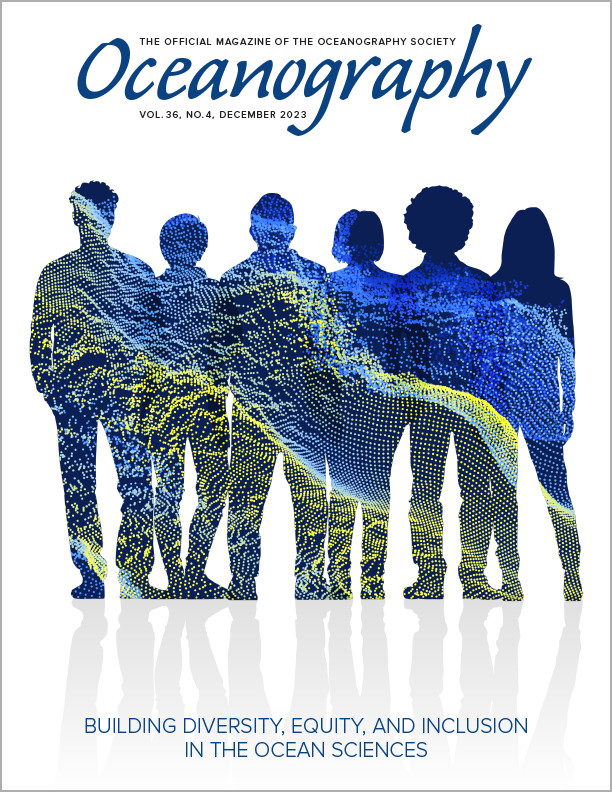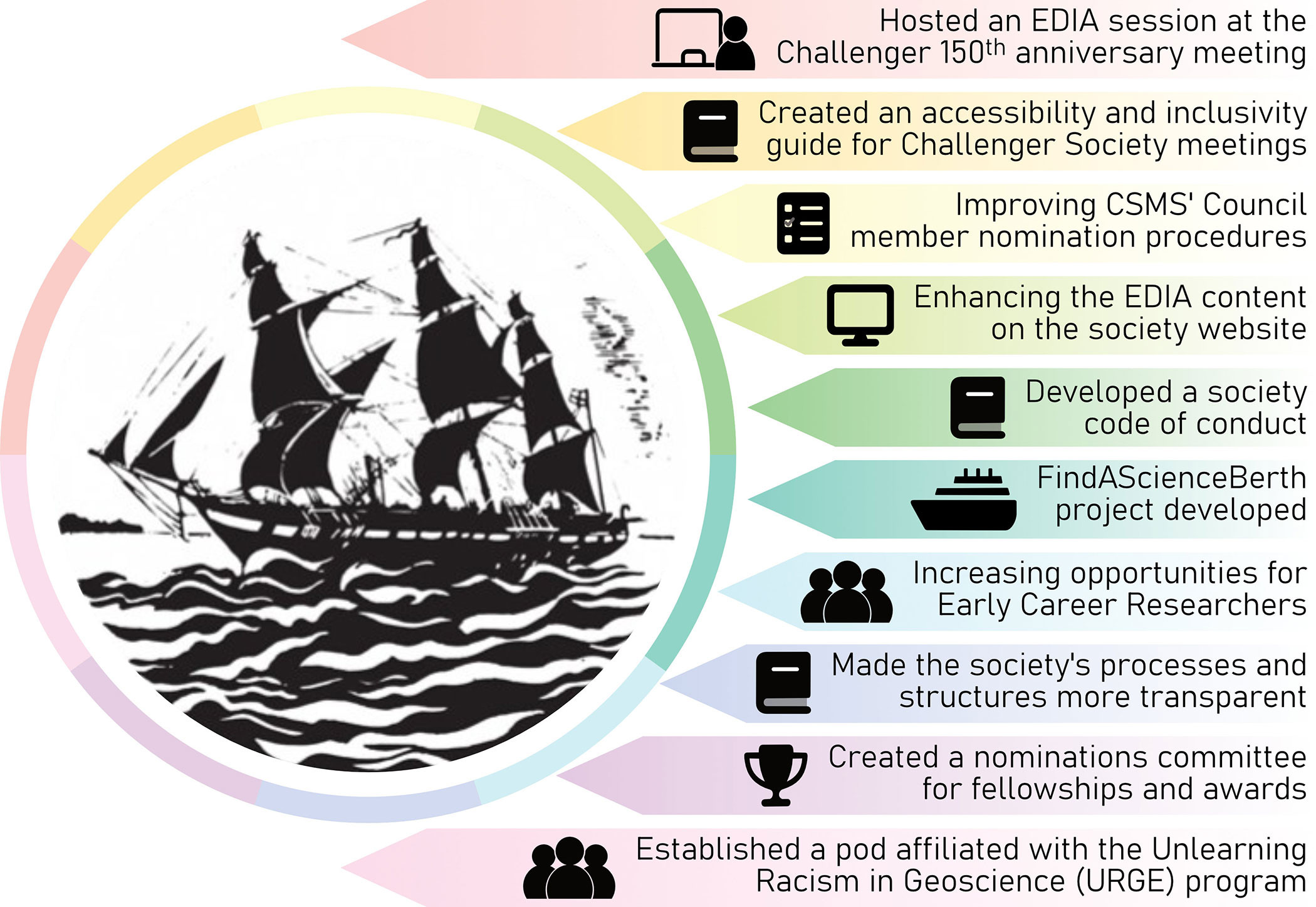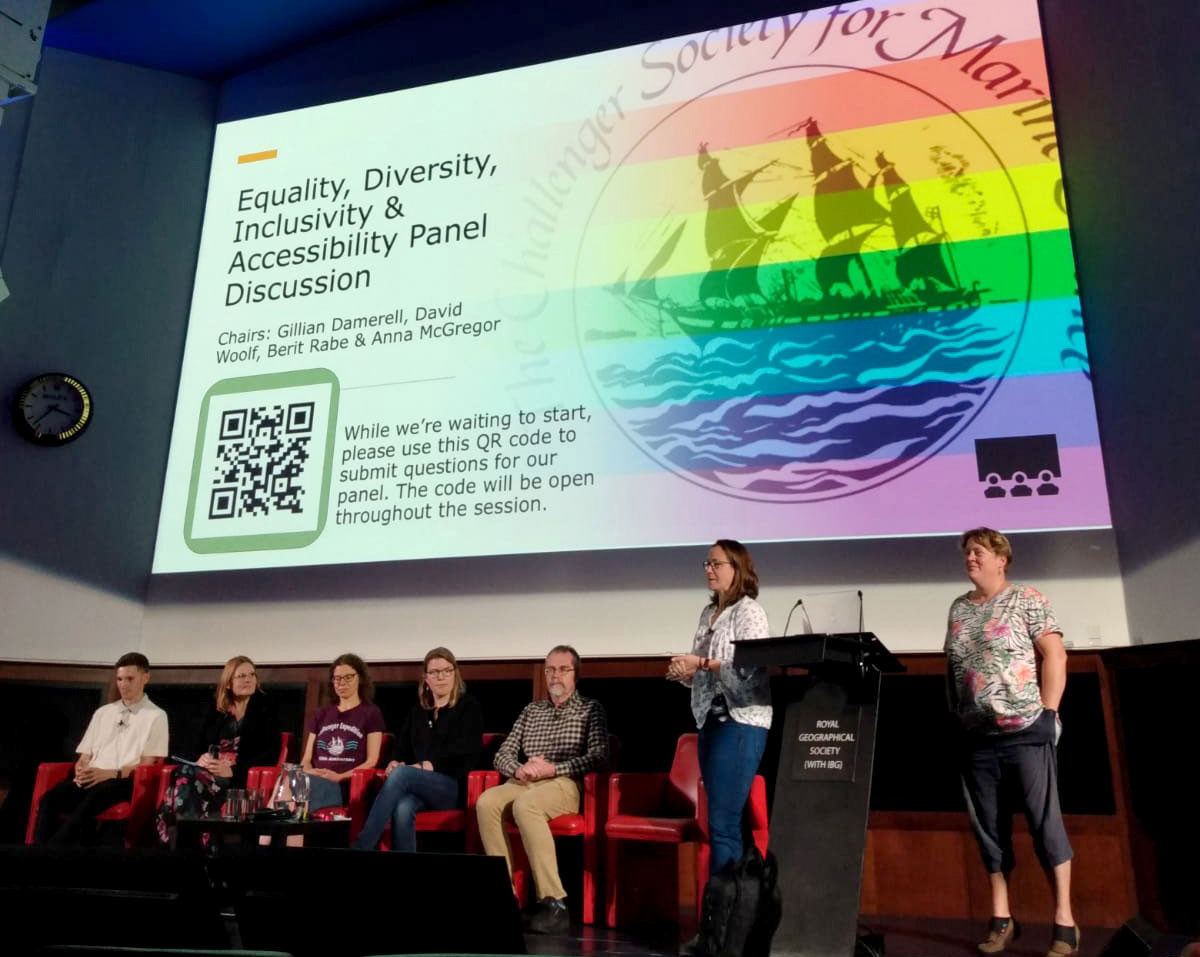Full Text
Introduction
The Challenger Society for Marine Science (CSMS) is the learned society for marine scientists based in the United Kingdom, with a membership of over 470 people from >100 institutions, across all academic career stages. CSMS members have been interested in improving the representation of a diverse range of identities in UK marine science, largely driven by their own experiences of inequity in the discipline, such as the challenges faced by women (Hendry et al., 2020). The structural exclusion of individuals by race, sex, ethnicity, social class, disability, sexuality, and the compound sum of these factors can result in a lack of diversity during recruitment and poor retention. Since 2021, CSMS has formed the first UK-wide equity, diversity, inclusion, and accessibility (EDIA) working group for marine scientists, with the aim of coordinating action to address the causes of exclusion and to improve representation across the discipline. The group of 25 volunteers meets each month to discuss a topical agenda, and the chair of the working group sits on the council of CSMS, providing EDIA input from the working group on society-wide strategic decisions. To date, the main actions of the group have focused on:
- Improving CSMS processes to increase diversity in fellowship and award nominations
- Increasing the visibility of EDIA-related topics through introducing a dedicated EDIA plenary session at the CSMS conference
- Breaking down barriers to inclusivity through establishing FindAScienceBerth, a spin-off project to increase access to seagoing fieldwork
- Critical self-reflection of the ongoing lack of racial diversity in UK marine science through affiliation with the Unlearning Racism in Geoscience (URGE) initiative
Case Study: FindAScienceBerth
Student surveys conducted by the EDIA working group, alongside research from Johri et al. (2021), found that individuals from underrepresented minorities tend to have limited participation in research networks compared to their peers. For example, a survey of UK research cruise chief scientists by the EDIA working group revealed that in most cases, individuals are recruited to seagoing fieldwork through internal networks. While chief scientists often wish to recruit participants for research cruises from underrepresented backgrounds, there is no efficient system through which they can connect with such individuals. FindAScienceBerth, a project under development by members of the CSMS EDIA working group, aims to provide a solution to this problem by providing a user-friendly interface between chief scientists and anyone seeking opportunities to participate in cruises.
The funding received for FindAScienceBerth was allocated to software development in order to build our platform and integrate it into the national Marine Facilities Planning tool, a system already used to schedule ship time for the main UK research vessels. This allows spare berth capacity to be automatically determined from submitted cruise plans and allows applicants to see cruise details (e.g., the chief scientist, duration, start and end ports) prior to applying for a berth. Under the UK’s funding model, there are no direct costs incurred to any party from occupying a berth that would otherwise be left empty; however, applicants’ institutions will be required to cover the costs associated with mandatory certification (sea survival training and medical clearance) as well as travel to and from the ship. Opportunities for travel grants to support these costs exist through a number of groups in the UK, including the CSMS. Berth opportunities will be disseminated as they arise through existing platforms (e.g., the CSMS mailing list and social media) and via initiatives specifically focused on underrepresented groups.
We considered how to embed EDIA in the selection process. For situations where applicant numbers exceed available berths, we developed flipped selection guidance for chief scientists. A flipped selection criterion promotes those individuals who would gain the most from the experience, as opposed to filtering for the most experienced candidates; within this context, prior experience is related to privilege. The application process records previous experience and qualifications, and allows applicants to provide individual context and discuss their motivations for applying. Including anonymized diversity monitoring alongside the selection process will allow us to critically analyze the effectiveness of this tool in promoting diversity across different identities and to adapt the selection process in the future, if needed.
While we hope that FindAScienceBerth will succeed in breaking down a barrier to participation in seagoing fieldwork, we recognize that this, or any other individual project, cannot fix the systemic problem of exclusion across the discipline. Particular challenges exist on multiple levels and require diverse solutions. For example, modernizing perceptions of marine science and the range of skills required (Mol and Atchison, 2019) could encourage a more diverse range of people to apply to marine science degree programs. Encouraging the adoption of ship-to-shore data streaming and digital twinning can allow for a greater range of opportunities for individuals who can’t or don’t want to go to sea (Barnhill et al., 2023), while increasing the availability of long-term funding can help to sustain and maximize the impact of EDIA initiatives aimed at increasing the diversity of marine scientists.
Lessons and Challenges
We welcome the recent increase in the number of funding opportunities available for EDIA-related activities in the UK, including that which supported the development of FindAScienceBerth. While this is a positive step in allowing predominantly volunteer led groups to take material actions on EDIA matters, our group has struggled to sustain projects under existing funding models. FindAScienceBerth received funding with a maximum spend period of five months, which allowed for the initial development of the software platform, but cannot sustain any long-term administrative costs or provide direct financial support to applicants who are successful in gaining a berth. We suggest that short-term funded EDIA projects such as FindAScienceBerth should be able to apply for continuation funding.
While FindAScienceBerth has been developed within the UK funding and ship allocation framework, the Marine Facilities Planning tool is used by many countries, thus FindAScienceBerth could be implemented by others. Foreseeable challenges to others include requiring a national network of interdisciplinary marine scientists, like CSMS, in order to reach potential applicants; needing a centralized system for ship time allocation that can record the number of available berths; and being able to utilize spare berths on a no-cost or program-funded basis with minimal additional logistical pressure on project teams.
Successes and Outlook
The actions delivered by the CSMS EDIA working group over the last two years (Figure 1) have been successful in advancing our goal of facilitating change within the CSMS itself and the wider UK marine science community, and the collective engagement of a group of individuals from different institutions has encouraged others to join conversations around EDIA issues. Our success in improving engagement on EDIA issues was best illustrated at the Challenger Society 2022 biennial conference held in London, where the working group hosted an EDIA discussion panel in the main conference hall (Figure 2) in a dedicated time slot with no parallel sessions. The session was very well attended across career stages and had high levels of engagement, approximately tenfold the attendance at previous EDIA sessions held in parallel with scientific sessions. Specific successes from this experience were integrating the EDIA working group into conference planning, giving us the ability to request our standalone session, and ensuring those who speak on EDIA matters are also given a platform to promote their scientific research. In the future, we want to ensure that conference organizing committees are mindful of EDIA by working with them from conception through to delivery. We have previously struggled to add EDIA practices to events at the last moment after most decisions have already been made.
|
|
|
|
The working group is proud to bring EDIA matters from a fringe issue in UK marine science to a topic that everyone can engage with. Our ongoing activities within the CSMS include making the Society’s processes and structures more transparent, enhancing the EDIA content on the Society’s website, improving CSMS’s Council-member nomination procedures, and increasing opportunities for early career researchers with in-person networking and online skills-based workshops. The EDIA working group will continue to promote diversity monitoring and actions to improve representation and inclusion in UK marine sciences, with a particular focus on racial diversity, underrepresented socioeconomic groups, and intersectionality.



